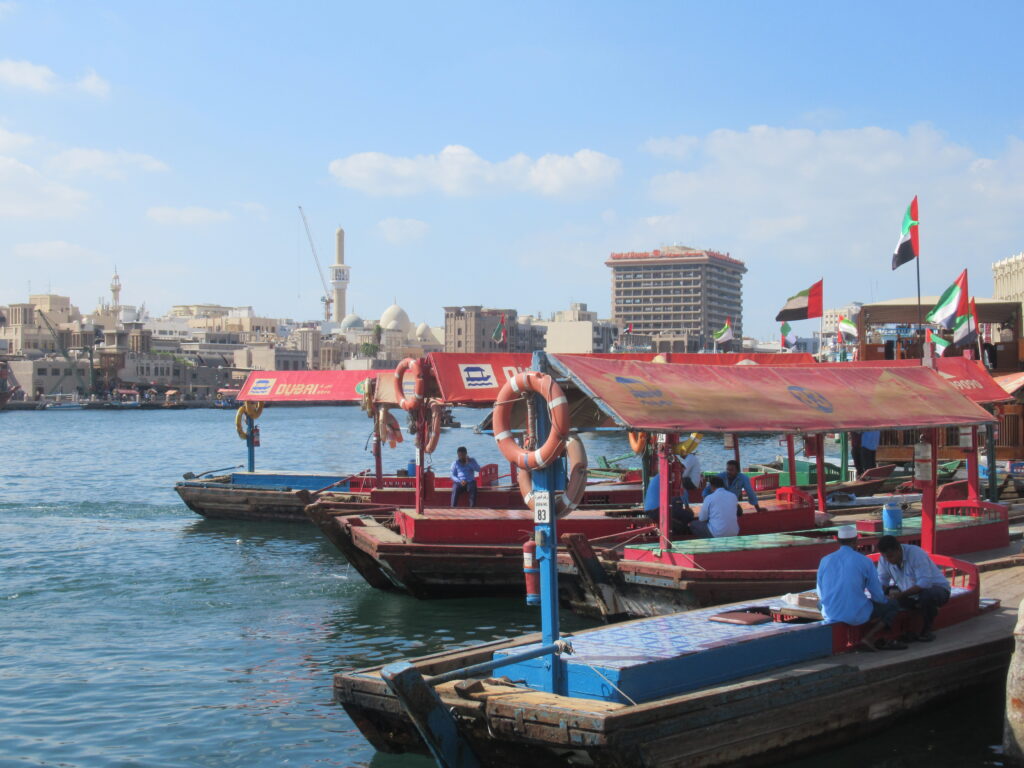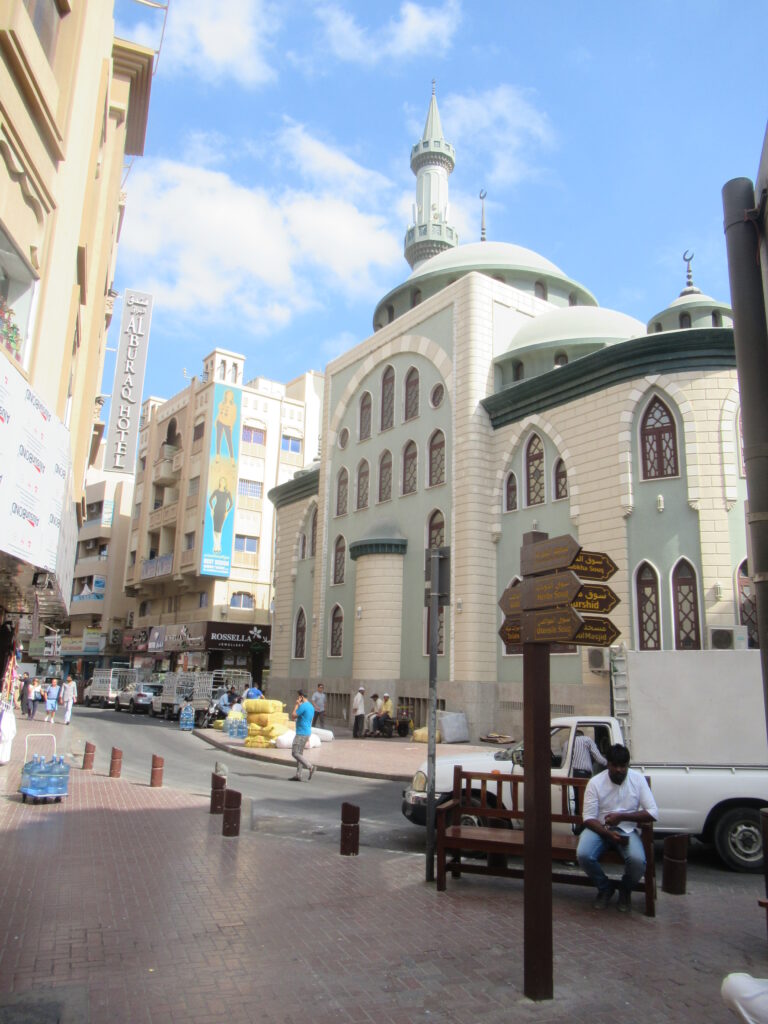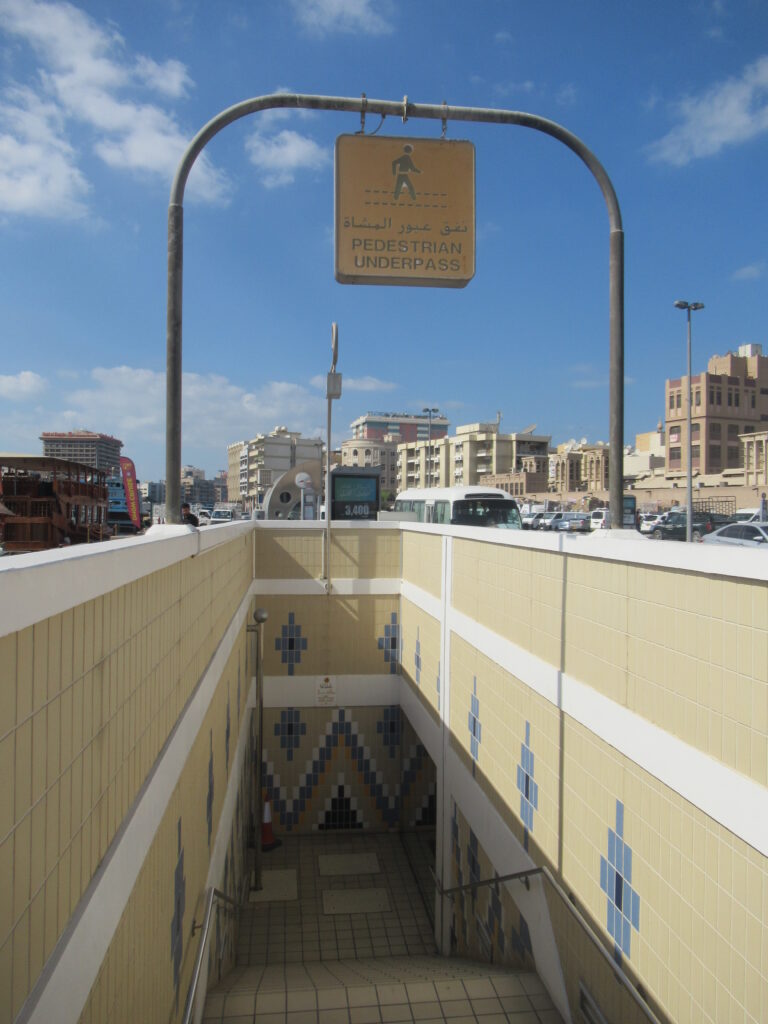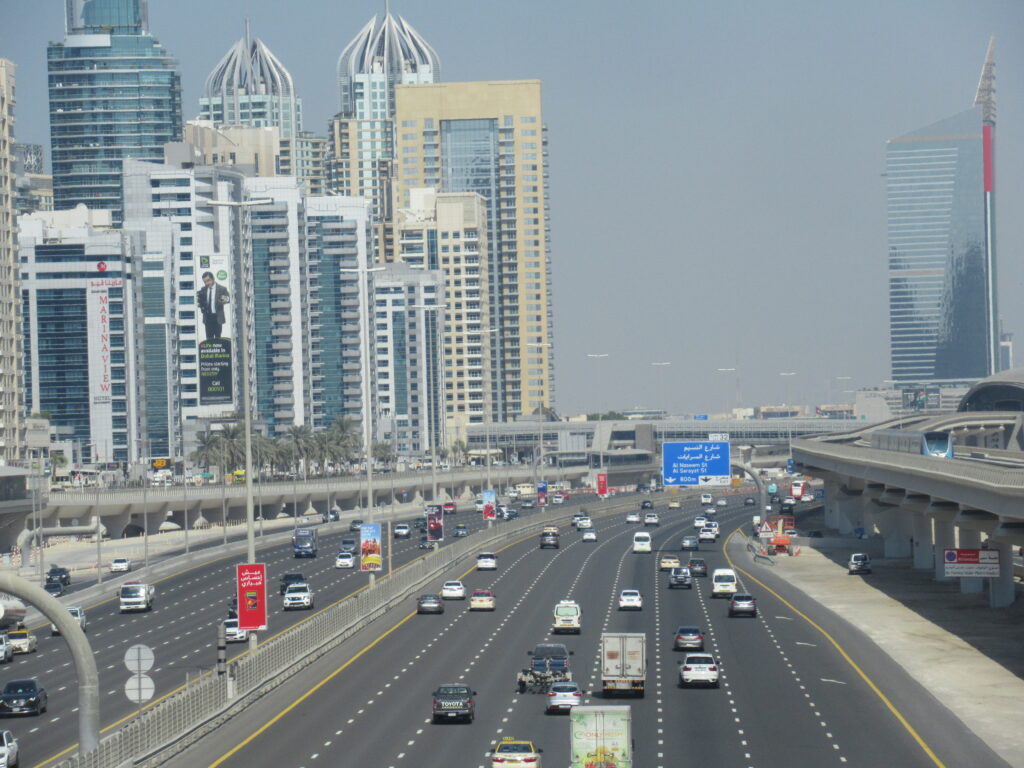One city so far: Dubai. Next 5 cities to come: George Town, Bangkok, Huangzhou, Beijing, and Shanghai. Watch this space.
1. Dubai, United Arab Emirates

| Population | 3.5 million (2023) |
| Population density | 2,200/km2 |
| Walking share | Unknown |
| Passenger cars per capita | 0.54 (2015) |
| Paulo’s Walk Score (1-10) | 5 |
Not an obvious city to walk. It’s too hot and most of the city was designed for cars (think 16-lane roads). But like other large Asian cities, it features some quite pleasant environments to walk: shopping malls! Not everyone would count strolling in shoopping malls as “active travel” but why not? You still go from place to place, and it is still physical activity. It’s a good option when it’s too hot outside (here, it’s all the time). A typical Dubai mall is bigger than a mid-sized European town so a lot of ground can be covered in a day, without even realising it. For extra exercise, you could avoid escalators and lifts and use stairs instead (if you can find them – I couldn’t).
Walking in the older parts Dubai can also be pleasant as the scale is smaller than newer parts, and streets are dense with shops and other places of interest. Unlike malls, this is a non-covered area, so walking is less pleasant in the hotter periods of the day. But there’s also shade and (less frequently) places to rest.


Despite the roads being designed for cars (for a lot of cars), most pedestrian infrastructure (where it exists) is of good quality and is in good condition (maybe because it’s little used?). However, not all crossings provide for people with mobility restrictions.


Walking in the suburban residential areas is another story. These are very low-density areas. Distances are long, pedestrian infrastructure is scarce and pedestrians are not a common sight. But according to this paper, the low densities are not perceived as a problem.
Even in more central areas, walkable neighbourhoods are often islands, as they do not have good pedestrian connections linking them. In most cases, they are separated by one or more of those 16-lane roads.

The good thing is that Dubai is in permanent change, and policy priorities are too, and they are starting to favour active travel. The 2040 Dubai Masterplan aims at creating a 20-minute city and increasing the walking and cycling modal share to 80% by 2040. A massive project supporting this aim is The Loop, a 93-km circular corridor for walking and cycling. Climatized, of course.
Fly to Europe, Africa, North America, Latin America, or Oceania